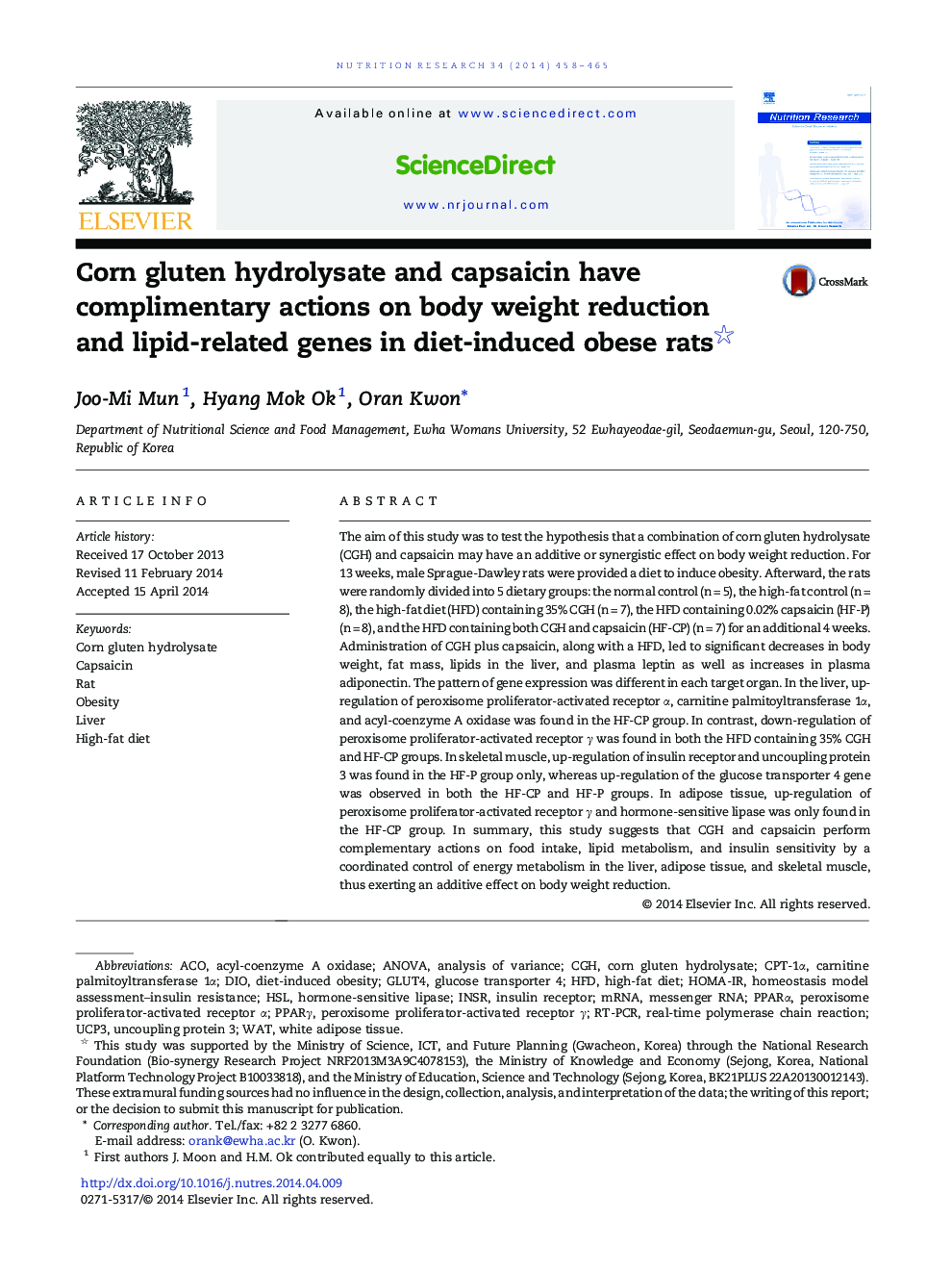| Article ID | Journal | Published Year | Pages | File Type |
|---|---|---|---|---|
| 2809159 | Nutrition Research | 2014 | 8 Pages |
The aim of this study was to test the hypothesis that a combination of corn gluten hydrolysate (CGH) and capsaicin may have an additive or synergistic effect on body weight reduction. For 13 weeks, male Sprague-Dawley rats were provided a diet to induce obesity. Afterward, the rats were randomly divided into 5 dietary groups: the normal control (n = 5), the high-fat control (n = 8), the high-fat diet (HFD) containing 35% CGH (n = 7), the HFD containing 0.02% capsaicin (HF-P) (n = 8), and the HFD containing both CGH and capsaicin (HF-CP) (n = 7) for an additional 4 weeks. Administration of CGH plus capsaicin, along with a HFD, led to significant decreases in body weight, fat mass, lipids in the liver, and plasma leptin as well as increases in plasma adiponectin. The pattern of gene expression was different in each target organ. In the liver, up-regulation of peroxisome proliferator-activated receptor α, carnitine palmitoyltransferase 1α, and acyl-coenzyme A oxidase was found in the HF-CP group. In contrast, down-regulation of peroxisome proliferator-activated receptor γ was found in both the HFD containing 35% CGH and HF-CP groups. In skeletal muscle, up-regulation of insulin receptor and uncoupling protein 3 was found in the HF-P group only, whereas up-regulation of the glucose transporter 4 gene was observed in both the HF-CP and HF-P groups. In adipose tissue, up-regulation of peroxisome proliferator-activated receptor γ and hormone-sensitive lipase was only found in the HF-CP group. In summary, this study suggests that CGH and capsaicin perform complementary actions on food intake, lipid metabolism, and insulin sensitivity by a coordinated control of energy metabolism in the liver, adipose tissue, and skeletal muscle, thus exerting an additive effect on body weight reduction.
